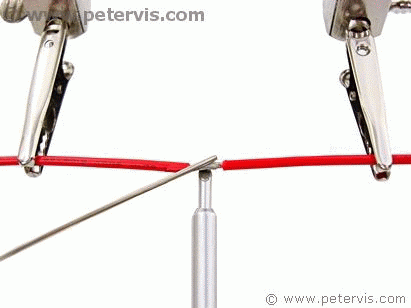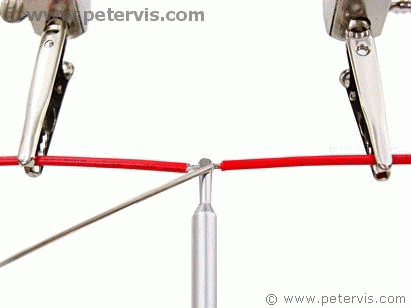How to Solder
Soldering electronic components is a skill that develops as you get older and gain more experience. You start to learn how solder behaves in different situations, and how it reacts with different component types and printed circuit boards. It is always good to learn the basics because this grounding will be useful in developing your skills.
Applying Solder to the Joint


If the junction is sufficiently hot enough, your solder wire will melt when it touches the hot surfaces. The solder should flow and spread over the hot surfaces and sometimes it even bubbles. It flows and spreads over a hot surface of its own accord, and professionals who understand how solders behave on hot surfaces use that knowledge to their advantage. There is usually a release of flux smoke. The flux prevents the hot metal from forming an oxide layer. If you are using an environmentally friendly solder then your flux fumes will be clean and not contain any rosin acid or halides.
Do Not Drip

The drip method is the wrong way to solder. As you can see, melting the solder directly onto the tip and dripping it onto the cold wires will not make a proper electrical connection. Sometimes, beginners make this mistake.
Wetting Zzzz
When I was writing this article, I spoke to one of our solder geniuses with a PhD, who still trips over his shoelaces.
In his best scientific monotone voice he explained what wetting was, and used the words "solidus", "liquidus", "eutectic", and "entropy"... and I have to say that I fell deeply into a coma... and never thought about it since.
Wetting is when the solder is in a flowing state adheres, or sticks to other metals... This is where I switched off. Hence, I have written this at the end in case anyone else drifts off.
No Clean
No Clean is a category of flux defined by the IPC (Interconnecting and Packaging Circuits) organisation. It consists of a mix of solvents, and activators. Exactly which solvents, and activators, and their amounts depend upon the individual manufacturer. However, the flux residue must be clear, non-conductive, non-corrosive, non-tacky, and hard, and therefore requires No Cleaning.
The flux must also be compliant with a Surface Insulation Resistance test of up to 100,000,000 Ω. As you can see, a hundred million ohms is good enough for almost all hobby projects.
Halides
If I remember my O' level Chemistry a halide is a binary compound that contains a halogen atom. Halogens are the group 17 elements in the periodic table, consisting of chlorine, fluorine, bromine, iodine, and astatine... Finally, after all these years, this knowledge came to some good use... :-) Halogens are harmful to biological organism, which is why swimming pools have chlorine in them. Hence, halides are generally not good for your health. Halides in flux helps to minimize oxidation, however you can now buy modern solders that are free of halides.
This Article Continues...
A Soldering Guide for Beginners, Kids, and Electronics StudentsSoldering Guide: Safety Tips
Choosing the Right Solder Wire
How to Solder
Soldering Guide Basics
Soldering SMD Guide
Soldering in Space
How to Choose a Soldering Iron
Omega: Rosin and Lead Free Solder